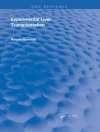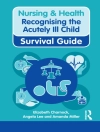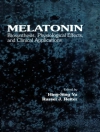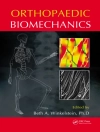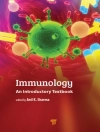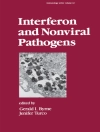This book explains the basic concepts of Selective Decontamination of the Digestive tract (SDD) to help those involved in treating critically ill patients to improve outcomes and the quality of care.
SDD has led to major changes in our understanding, the treatment and prevention of infections in critically ill patients over the past 40 years. It is the most studied intervention in intensive care medicine and is the subject of 73 randomized controlled trials, including over 15000 patients and 15 meta-analyses. SDD reduces morbidity and mortality, is cost-effective and safe as SDD does not increase antimicrobial resistance. Correct application of the SDD strategy enables ICU teams to control infections – even in ICUs with endemic antibiotic resistant microorganisms such as methicillin resistant S. aureus (MRSA).
Describing the concept and application of SDD, and presenting case studies and microbiological flow charts, this practical guide will appeal to intensivists, critical care practitioners, junior doctors, microbiologists and ICU-nurses as well as infection control specialists and pharmacists.
Jadual kandungan
Part I. The basics.- Introduction.- Microorganisms.- Defense.- Infections.- Infection control.- Enteral and parenteral antimicrobials used in the SDD-policy.- Part II. Clinical microbiology for the ICU team.- Clinical microbiology: an overview.- Surveillance versus diagnostic cultures.- Sampling and microscopy.- Inoculation and culturing.- Naming of microorganisms.- Antibiotic sensitivity testing.- Availability of the clinical microbiological results for the intensivist.- Part III. Therapeutics.- Therapy of bacterial and fungal infections.- Viral infections in the ICU.- Inflammation and hyperinflammation.- Part IV. Surveillance.- Resistance.- Outbreaks.- Appendix.- Appendix 1. General principles before implementing the SDD-strategy.- Appendix 2. Selective decontamination of the digestive tract.- Appendix 3. SDD in Methicillin-resistant S. aureus (MRSA).- Appendix 4. SDD in Multidrug-resistant Gram-negative bacteria (MDRGNB).
Mengenai Pengarang
Hans Rommes studied medicine at Utrecht University in the Netherlands. He was the Director of the Respiratory Intensive Care Unit at the University Hospital Groningen, and the Director of the Intensive Care Unit at Gelre Ziekenhuizen Apeldoorn. He has also served as a lecturer at the Antonius Hospital Nieuwegein and at the Amsterdam University Hospital, and as a member of the editorial boards of various publications. He has authored over 70 papers in international journals and books.
Rick van Saene studied medicine at the University of Leuven (Belgium), and was awarded a M.D. in 1973. He trained and qualified as a medical microbiologist at the University of Groningen (The Netherlands) in 1977. His research into the role of Escherichia coli in inflammatory bowel disease led to a Ph.D. in 1982 and in the same year, together with colleagues, he initiated a major clinical project entitled ‘Infection prevention in the severely traumatized patient’. In 1987 he was appointed as a senior lecturer in Medical Microbiology at the University of Liverpool (U.K.) and consultant microbiologist at the Royal Liverpool Children’s NHS Trust (Alder Hey Hospital). He has been awarded various European research prizes, fellowship of the Royal College of Pathologists, and received merit awards for his infection prevention work using SDD. He is the author and/or co-author of more than 300 publications and books on infection control and SDD.
Miguel A. de la Cal, was Deputy Director of the Critical Care Medicine Department at the Red Cross Hospital (Madrid), General Director of Public Health, Spanish Ministry of Health, and Director of the Critical Care Medicine Department Hospital Universitario de Getafe (Madrid). He is the former Editor-in-Chief of Medicina Intensiva – the journal of the Spanish Society of Intensive and Critical Care Medicine and Coronary Units (SEMICIUC), co-editor of the book “Infection Control in the Intensive Care Unit”, , and co-author of over 100 international publications.





